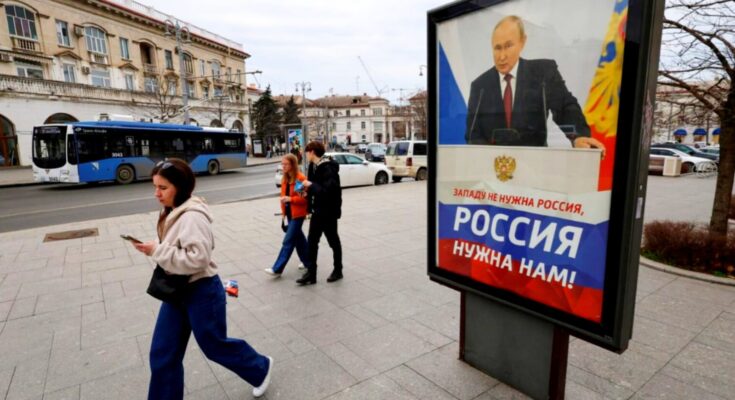Russia’s annexation of Crimea a century ago helped to spark the war in Ukraine. War News from Russia and Ukraine.
On March 7, 2014, a scruffy man in his late 30s with short hair spoke to a motley group of forty “volunteers.”
Three men without a sign were ahead of him.
In the Ukrainian Crimean port city of Sevastopol, a group of men in their twenties to fifties congregated in front of a white government building constructed during the Stalinist era.
Nestled high above the shoreline were massive sequoias, blossoming cherry trees, and old women clutching handwritten signs that said, “By Referendum in Russia” and “I want to go to Russia.”
Title: Investigating Hobby Lobby Hours to Optimize Creativity and Convenience
Moscow planned to hold a “referendum” on the “return” of the Black Sea peninsula to Russia eight days later.”There’s a spy!” They yelled as they twisted my arms, preparing to strike.
However, the teacher asked that he and I hold off.
He told the audience that he would train at a military facility outside of Sevastopol and that he would show up wearing “comfortable clothes” and shoes for his thirty-minute speech.
She was questioned if she had brought a gun by one of the volunteers. Many others agreed by nodding.
“We turn into an armed criminal organization when you pick up guns. However, every unit will be on fire if something were to happen, the instructor said.
Following the meeting, he looked through my press credentials and informed me that he was a former intelligence officer who had served in the unstable North Caucasus region of Russia and had come to Crimea as a “volunteer.”Our teamsHe declined to give his name with grace.
Russo-Ukrainian War
little green guys
Although there was no opening shot, the events in Crimea a decade ago set the stage for the current conflict between Russia and Ukraine.
Russian politician and speaker of the Crimean regional parliament Vladimir Konstantinov declared on February 20, 2014, that he “did not reject” the return of the peninsula to Russia.
Thousands of gunmen in plain clothes emerged in Crimea, Ukraine, on the same day.
In a few of days, pro-Western rallies in Kiev would force out pro-Russian Ukrainian President Viktor Yanukovych, to which he was responding.
Referred to as “little green men” or “polite people,” the soldiers remained silent when speaking with media or the local population, but Russian President Vladimir Putin declared in Moscow thatThousands of police officers and civil personnel, as well as other officials, joined the pro-Russian “government” led by Sergei Aksyonov, a former mafia boss and small political figure known as the “Goblin”.
Among the soldiers taken into custody was Ihor Voronchenko, who was the deputy head of Crimea’s coastal defense at the time.
“There was a windowless, lonely cell where time and space had vanished from view. When he was the commander of the Ukrainian navy in 2018, Voronchenko informed me that it had a psychological impact on people.
Blood was spilled but no guns were fired.
On March 4, Reshat Amitov, a Crimean Tatar demonstrator, was abducted by a “self-defense” squad.
He spent a week being tortured while detained alongside other captives in Simferopol, the administrative center of Crimea.The “referendum” was held a day later.
A small number of government and school facilities served as “polling stations,” where enthusiastic pro-Russian “voters,” primarily elderly men pining for their Soviet youth, gathered. provide, giving the appearance of a widespread vote.
Although Moscow claimed that 90% of Crimeans had cast ballots in favor of joining Russia, the “referendum” was not recognized by Ukraine or any other nation.
Vladimir Putin, the president of Russia, annexed Crimea on March 21.
His already dwindling support rating shot up to an impressive 88 percent after the annexation, which some Russians interpreted as a first step toward the USSR’s eventual restoration.
In reaction to the Middle East’s wave of large-scale protests known as the Arab Spring, the Kremlin proposed the notion of a
Her body was discovered, naked and damaged, on March 15.It became a gem in the Russian tsars’ crowns, and in 1783 they annexed it to the Crimean Tatars, a Muslim state ruled by the descendants of Genghis Khan and connected to Ottoman Turkey.
Because Nazi Germany occupied Crimea during World War II, the Czars and Communists recognized the region’s strategic significance in maintaining control over the Black Sea.
Joseph Stalin, the dictator of the Soviet Union, ordered the 200,000-person Tatar population to be deported to Central Asia after accusing them of “collaboration” with the Nazis.
“There was a loud knock on the door early in the morning. “Mom, dad is back from the war!” I yelled. However, two soldiers ordered us to begin packing,” historian Nouri Amirvalev recalled. Upon turning ten years old,In 1954, as the North Crimea Canal was being built, Crimea was seized by Soviet Ukraine. This allowed for agriculture in the parched interior and promoted the growth of urban settlements.
Millions of former Soviet citizens still remember their vacations in Crimea, which Moscow transformed into the Soviet Riviera.
Following the Soviet Union’s fall in 1991 and Ukraine’s independence, the majority of the people living in Crimea spoke Russian, they were largely Moscow loyalists, and Russia’s Black Sea Fleet was headquartered in Sevastopol.
“died without cause”
Politicians from Russia, such as Yuri Luzhkov, the mayor of Moscow, have been traveling to Crimea since the 2000s and publicly pushing for the region’s people to “reunify” with Russia.



